Done well, Integrated Marketing Communication campaigns have parts that are greater as a sum.
When all forms of media work together, it’s a powerful thing. You hear the term “Integrated Marketing Communications (IMC),” but what does it look like—and how do you actually execute?
IMC coordinates your Paid media (advertising), Shared media (social communities), Earned media (news coverage), and Owned media (website, sales materials, etc.) around a common objective and message. Try to work all four P-S-E-O buckets into every campaign.
Integrated campaigns don’t have to take months to play out. Sometimes you can concentrate them in one carefully chosen outlet for higher impact.
This worked well recently for our client, Donaldson Company, a maker of industrial dust collectors. First, rather than focus on their products, we focused on a customer problem: risks posed by combustible dust in manufacturing facilities. It’s a big topic in the industry and a challenging management issue.
We set this goal: Build a relationship with the customer through helpful education about reducing risks.
In a key part of our strategy, we teamed up with a leading trade journal, Powder & Bulk Engineering (P&BE), to reach 30,000 decision-makers. By providing cohesive messages in a variety of formats—all in the May 2017 issue—we were able to deliver more punch than any element would have had on its own.
Here’s how it came off—and tips for your next IMC campaign:
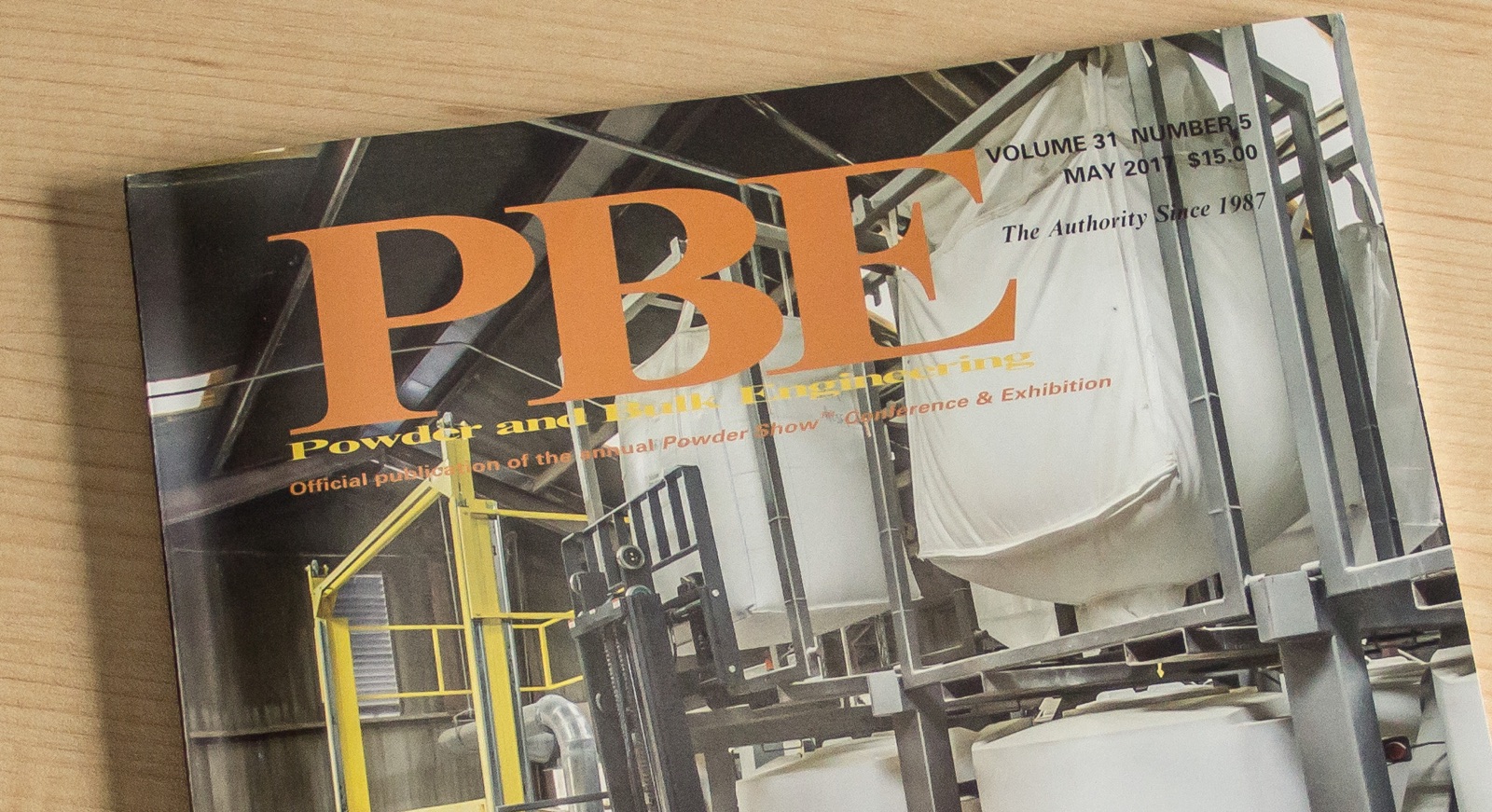
Build and leverage an owned asset.
A simple drawing in use by the Donaldson sales team (an “owned” asset) had real potential as a larger infographic. So we developed the Combustible Dust Roadmap into a poster that folded into the magazine (sponsored). In partnership with a laboratory, the guide offers a discount on dust property testing. Readers can pull out this reference piece, and use it immediately to start tackling their hazards. We had extra copies printed for other uses.
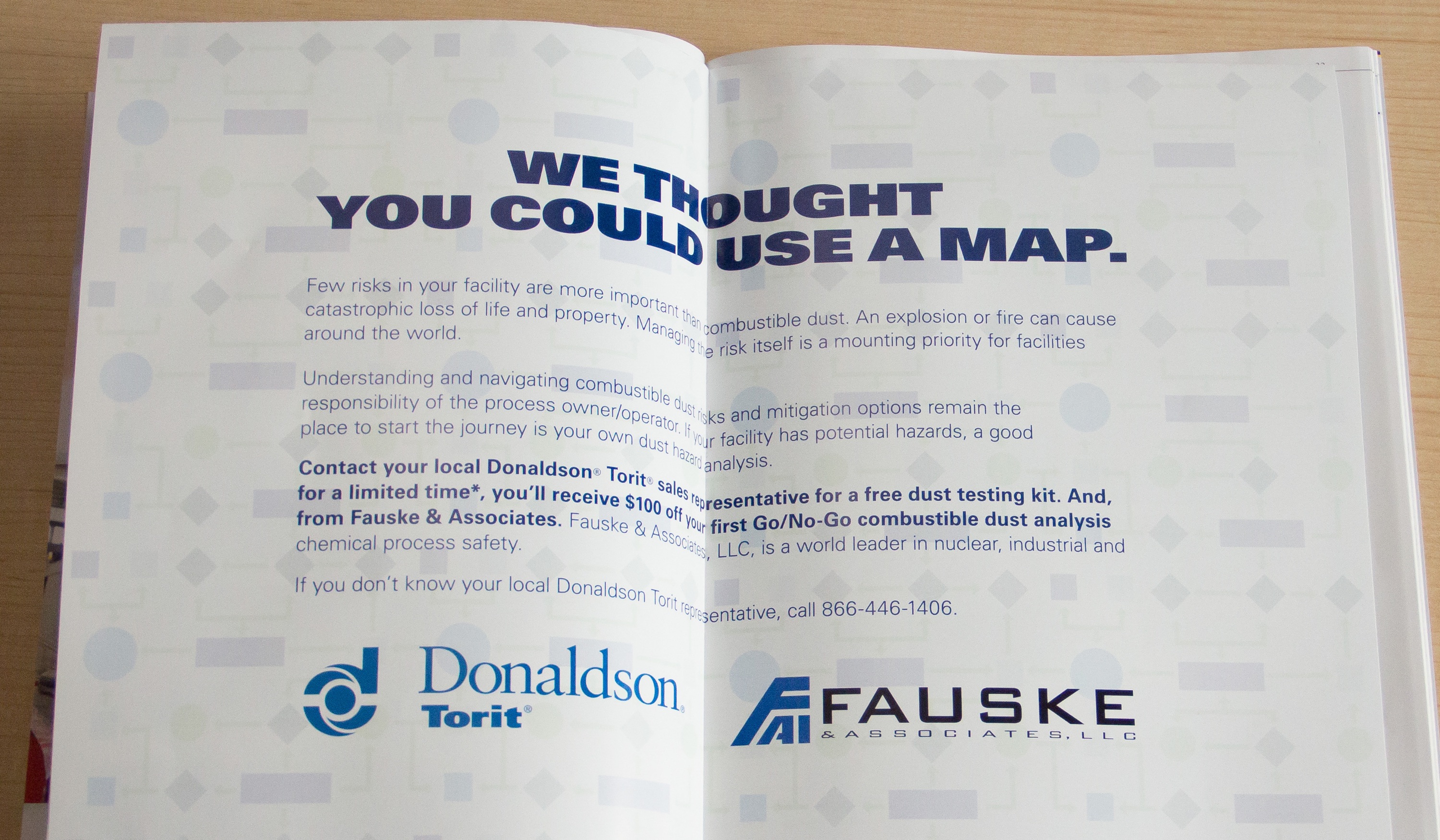
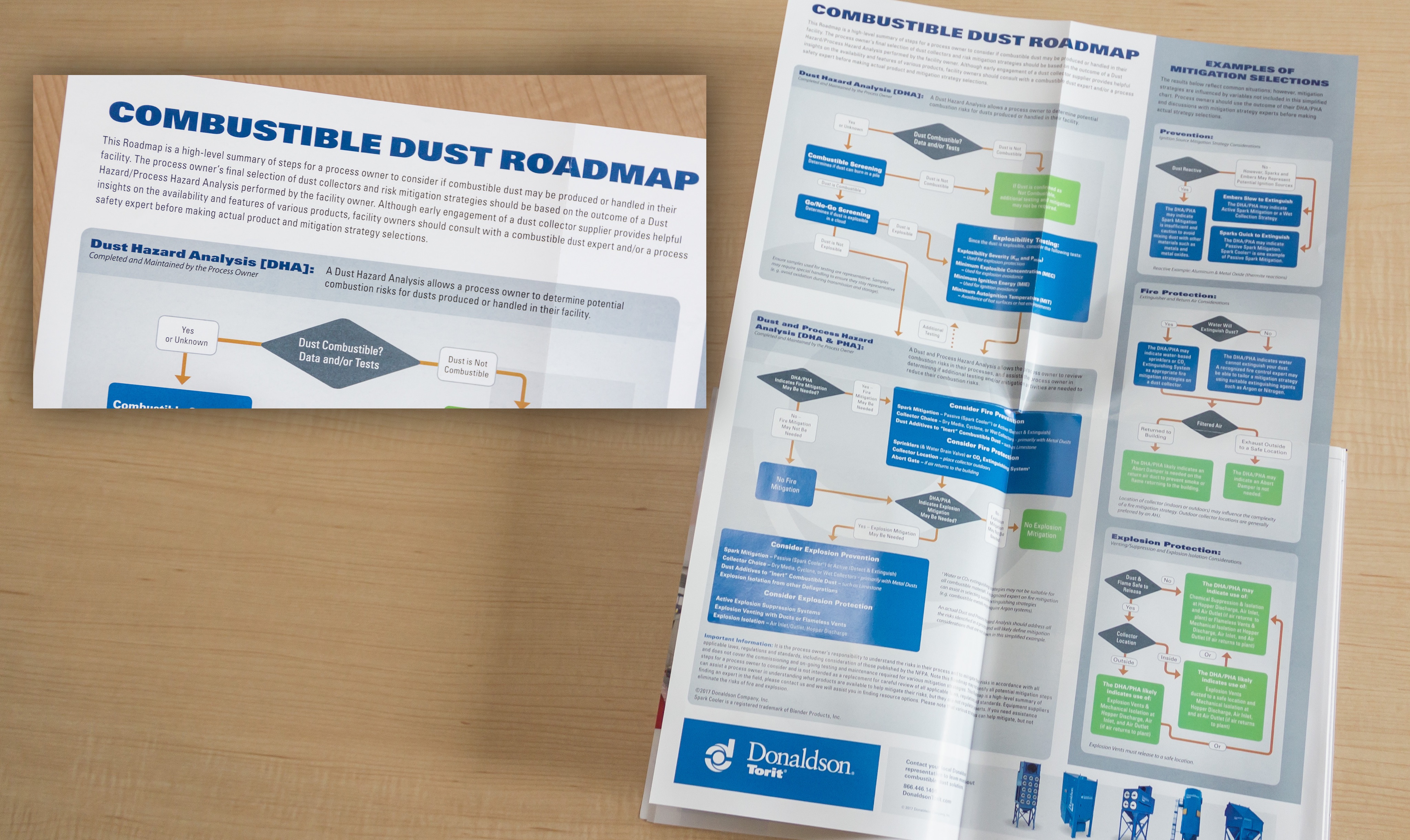
Develop an earned educational article.
Working with two Donaldson experts, we developed a bylined article on decision steps in managing dust risks. It walks through the Roadmap in a narrative form—and goes on to compare mitigation choices. The article earned placement on its merits. Contrary to rumor, respected trade editors choose editorial content independent of their sales arm. They look for articles that are useful to readers and exclusive to their magazine. Meet this need and they’ll tap you as a source for years to come.
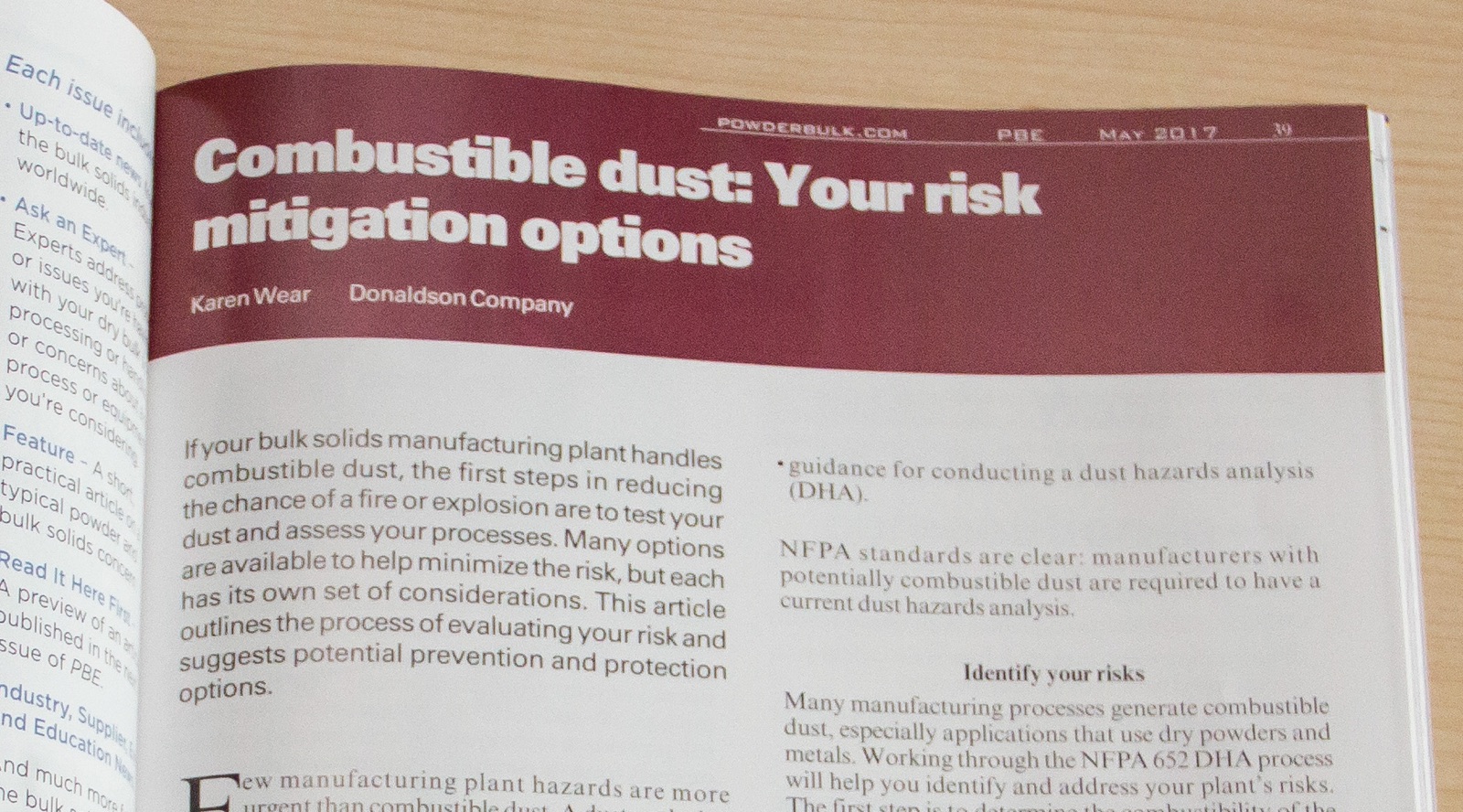
Complement with an earned news release.
For the magazine’s “Tech update” section, we provided a related news release announcing that Donaldson had just sold its 1000th Downflo® Evolution, an advanced dust collector with a smaller footprint—a major leap in the industry and one that our client had pioneered. This news further established Donaldson’s leadership.
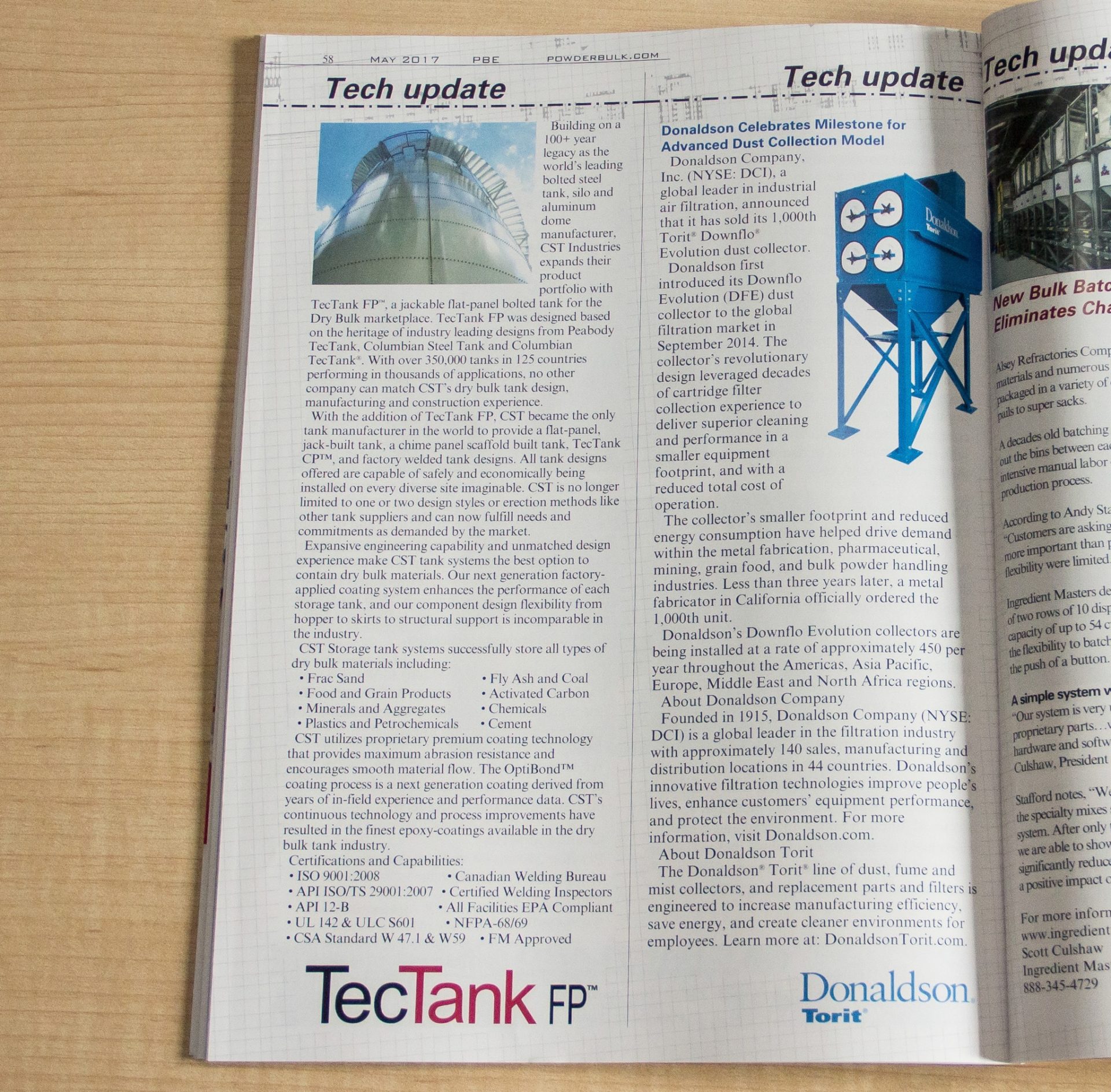
Support with paid display ads.
Finally, to complete the 1-2-3 punch, we placed well-designed ads: one on the back of the removable insert; the other in a prominent spot near the front cover. Ad claims are more credible when they’re supported by nearby content that you’ve authored.
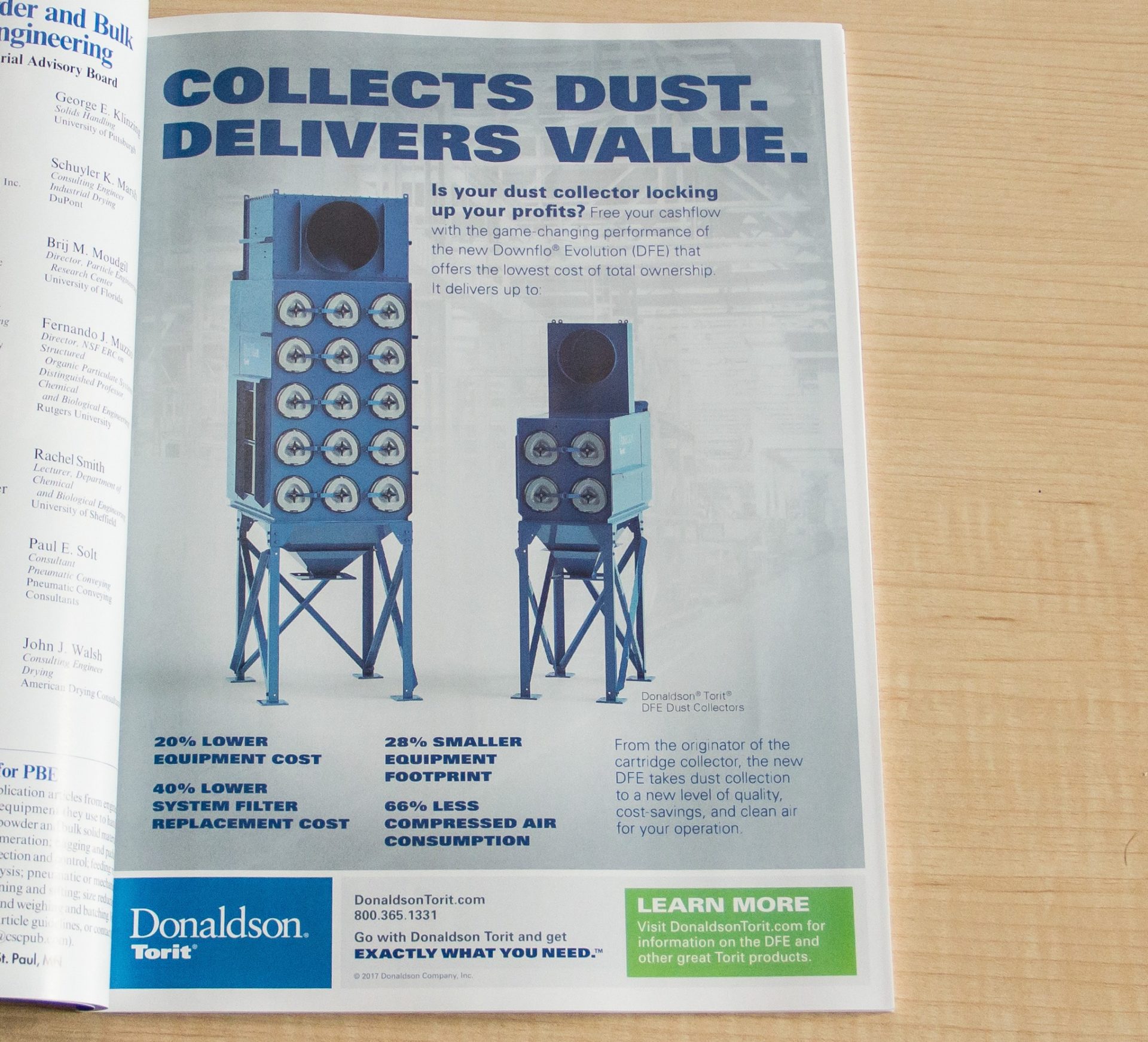
So what came first in this IMC campaign, the paid or the earned media? In this case, the earned. Once we pitched a strong article outline and the editor liked it and commissioned us to write it for May, we doubled down with paid sponsorship and leveraged Donaldson’s “owned” media—the Combustible Dust Roadmap.
By the way, we’re also doing vertical media relations about combustible dust for niche industries. We’ve placed variations of the Roadmap article in publications directed to food, chemical, and metals processors, whose concerns are more specific.
Done well, Integrated Marketing Communication has parts that are greater as a sum. Donaldson provided genuinely important subject matter to work with, and got behind the effort with some extra budget when the opportunity arose.
With a seasoned public relation function at DKY, teaming up strategically with the media buying and creative sides of the shop, we can jump on opportunities to do best-practice IMC.
